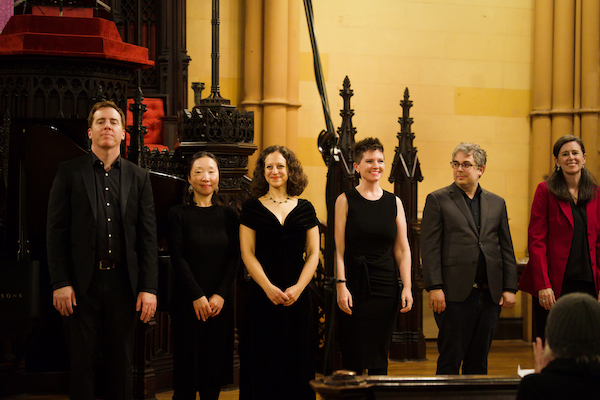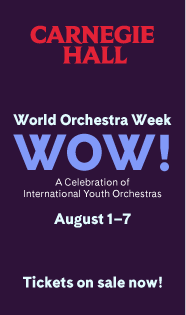Brooklyn Art Song Society provides deep illumination of the Second Viennese School

Putting together classical music concert programs is one of the most important thing any organization can do. Yet it is often such a rote, clichéd exercise that there are even awards given out for programming choices. Historical knowledge, insights, and some measure of thoughtfulness should be the basic standard, not the exception.
One organization that does programming right is the Brooklyn Art Song Society. This season they are featuring a series called “Circles,” programs that bring together music from composers who were closely associated with each other in artistic, social, and even romantic ways. It’s a way to hear artists play around with stylistic ideas, to hear them work with and against each other through music.
The latest installment, presented Friday night at the First Unitarian Church of Brooklyn in Brooklyn Heights, presented one of the most famous and concentrated social/musical groupings—the Second Viennese School of Arnold Schoenberg, Alban Berg, and Anton Webern. In a concert that felt even tidier than its two-hour run time, the Society delivered excellent performances of some of the most consequential music of the 20th century.
In a further, intelligent innovation, the concert didn’t just focus on songs—the vocal music shared equal stature with piano pieces from each composer.
Organized in short sets from each composer, pianist Eric Huebner played instrumental pieces before the vocal selections. That structure was introduced through Webern’s Variations for Piano, Op. 27 and his Op. 25, 3 Lieder, then Berg’s Piano Sonata Op. 1 and 7 früe Lieder. After intermission, the concert finished with Schoenberg’s 3 Klavierstücke, Op. 11 and the Op. 15 Das Buch der hängenden Gärten.
The performances were consistently, and strongly, elegant and full of musicality. This was unsurprising considering the nature of the vocal music and the quality of the singers—sopranos Maggie Finnegan and Jennifer Zetlan sang the Webern and Berg lieder, and mezzo-soprano Kate Maroney sang Schoenberg’s songs.
But the quality was unexpected and welcome in Huebner’s playing of Webern’s Variations. As much as the composer is known for his lean, atomized writing, he is also intensely lyrical, and Huebner’s phrasing was flowing, even vocal, in a way that recalled the manner of Charles Rosen. Even the aggressive pointillism of “Sehr schnell” had a subtle, overarching legato to it.
Finnegan, accompanied by pianist Michael Brofman, set the standard for the singing, with excellent intonation and articulation, and a palpable sense of expression and meaning. The notes and phrases were there, and her singing supported the text, poems by Hildegard Jane on the pleasures of nature.
She and the other singers also exemplified the thoughtfulness behind the program; Finnegan’s light timbre and trilling vibrato was the right sound for the Webern songs, while Zetlan’s (accompanied by Nana Shi) darker, broader tone was a perfect match for Berg’s late romanticism. Maroney’s rich, full-bodied voice was ideally paired with the symbolist quality of Schoenberg. There was skillful, intelligent singing from all with superb articulation.
Often categorized as a thinker, Schoenberg was fundamentally an emotional artists, one whose expression is often wrapped in his own hermetic interest in symbolic, even occult, ideas. His word-painting of Stefan George’s poetry presses forward while being enigmatic. Along with the beautiful sound, Maroney sang with a purpose behind each word. This is the type of artistic conviction one hopes for in every performance.
Huebner was impressive in this same way. Even dealing with a problematic Steinway baby grand (with one key out of tune and another that jangled against the strings) his artistry was superb. One heard every phrase in Berg’s fantastic Op. 1, how the composer used each to build his flowing, organic structure. That is music that is deep in the 19th century classical lineage, while Schoenberg’s Op. 11 come from the age where, for him, harmonic extremes tipped over into systematized atonality.
But the music is, again, trying to say something to the listener beyond the mere practice of fitting notes together. Huebner’s choices in what to emphasize, especially the way he clearly laid out the emotional flow and musical form of the second, “Mässig Achtel” movement, was impressive. This was a circle of composers speaking not only to themselves but to the listener.
The Brooklyn Art Song Society presents Circles IV: “Les Six,” 7:30 p.m, January 5, at the First Unitarian Church of Brooklyn brooklynartsongsociety.org
